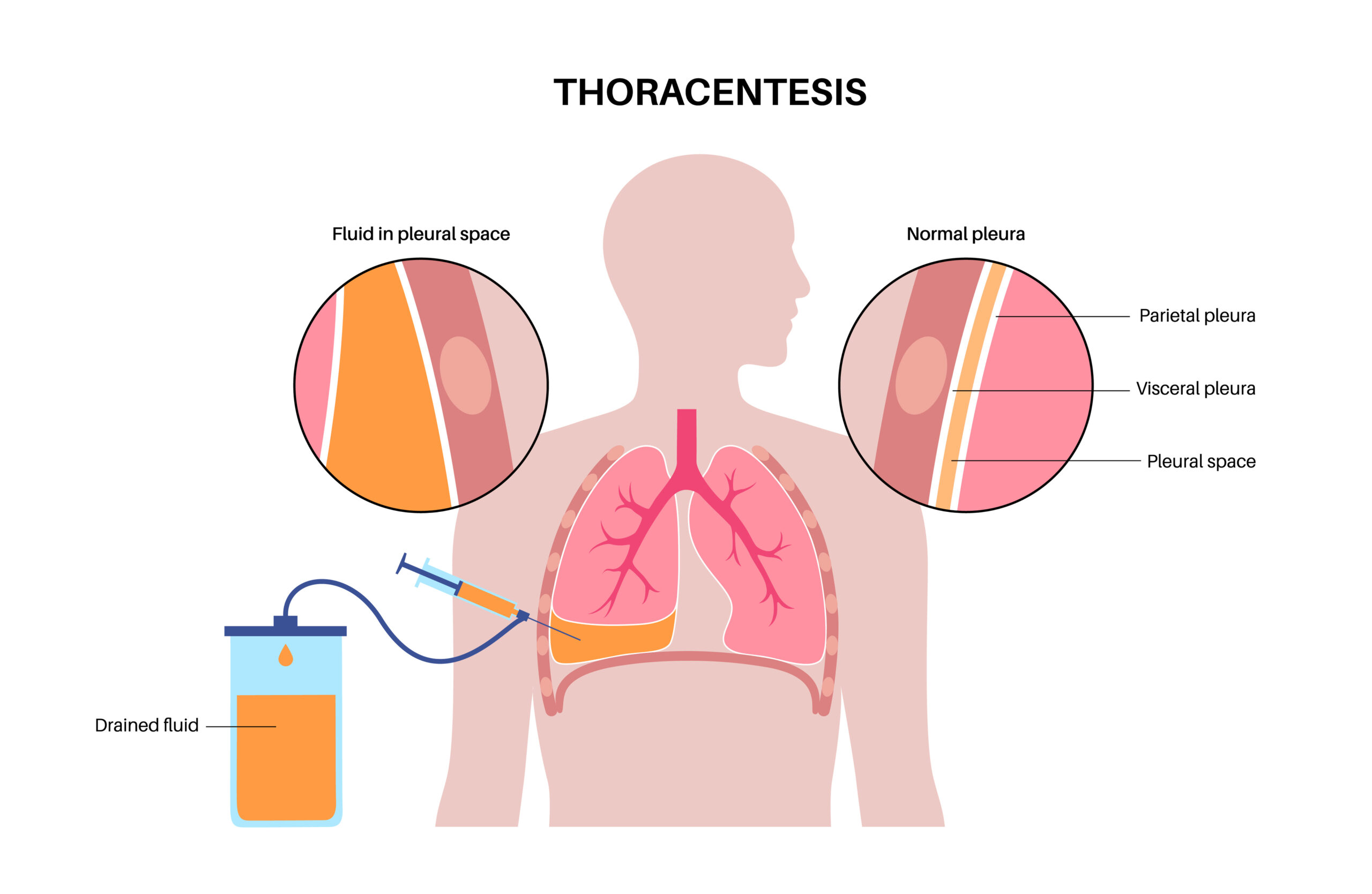
Thoracentesis
Thoracentesis is a minimally invasive procedure performed while the patient is awake, which involves draining fluid from around the lungs (pleural space) with a needle. Thoracentesis is necessary when a patient has a pleural effusion (excess fluid build-up between the lungs and chest), which can cause significant difficulty breathing, cough and other serious complications. Pleural effusion can occur as a complication from pneumonia, pulmonary embolism and many other underlying conditions. Our pulmonologist Dr. Jason Shatkin performs this procedure in our office by using ultrasound guidance to determine the exact location of the fluid, then placing a needle with a thin catheter through the patient’s mid-back area into the pleural space to remove the excess fluid, which relieves pressure from the patient’s lung. The pleural fluid collected is sent out to an accredited laboratory to test for bacteria, infection or other illnesses. This aids in prescribing the proper treatment and preventing possible reoccurrence of pleural effusion. Recovery time after undergoing thoracentesis is usually very short, patients most of the time being able to resume normal activity after 48 hours.



